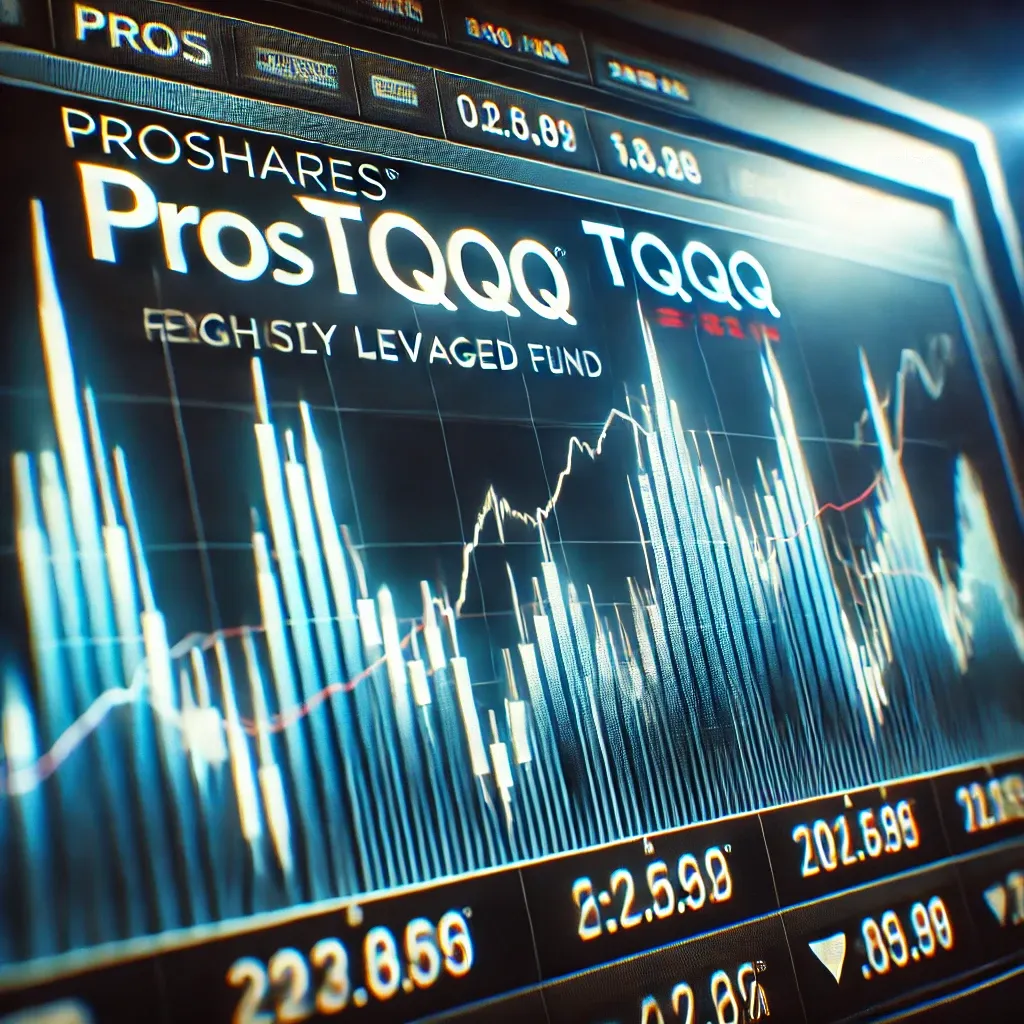TQQQ, or ProShares UltraPro QQQ, is a popular leveraged exchange-traded fund (ETF) designed for aggressive investors who seek to magnify returns. This article will explore the intricacies of TQQQ, its relation to the QQQ ETF, and what makes it a highly sought-after tool for investors looking to capitalize on the NASDAQ-100 index’s performance.TQQQ offers substantial profit potential, but it also comes with elevated risks. By using a 3x leverage strategy, TQQQ aims to deliver three times the daily returns of the QQQ, which tracks the performance of the NASDAQ-100. It is essential to understand both the benefits and the drawbacks of this approach.
What is QQQ?
The QQQ ETF, also known as the Invesco QQQ, is a fund that tracks the NASDAQ-100 index. This index includes 100 of the largest non-financial companies listed on the NASDAQ stock exchange, such as Apple, Microsoft, and Amazon. It provides exposure to a wide array of tech and growth companies, making it a popular choice for investors seeking to capitalize on the technology sector’s performance.
Benefits of QQQ:
- Broad Exposure: QQQ provides exposure to a diverse range of companies, including tech giants.
- Growth Potential: Historically, the NASDAQ-100 index has shown significant growth, making QQQ attractive to long-term investors.
- Liquidity: QQQ is one of the most liquid ETFs, allowing investors to easily buy and sell shares.
- Lower Risk than Leveraged Funds: Compared to leveraged ETFs like TQQQ, QQQ presents a lower risk since it is not amplified by leverage.
- Dividends: Some companies in the NASDAQ-100 offer dividends, adding an income stream for QQQ investors.
QQQ’s performance is tied to the broader market’s long-term growth trends, and while it doesn’t offer the amplified returns of TQQQ, it remains a solid option for those who prefer a balanced approach with less exposure to market volatility.
TQQQ vs. QQQM: Understanding the Differences
TQQQ and QQQM (Invesco NASDAQ-100 ETF) cater to different types of investors, with TQQQ targeting those who want aggressive short-term gains and QQQM appealing to long-term buy-and-hold strategies. The distinction between these two ETFs is crucial for investors to decide which vehicle aligns with their financial goals.
Key Differences Between TQQQ and QQQM:
- Leverage: TQQQ uses 3x leverage, which magnifies both gains and losses. QQQM does not use leverage, so its performance directly mirrors the NASDAQ-100 index without amplification.
- Risk Level: TQQQ is far riskier due to its leveraged nature, making it ideal for day traders or those who can monitor the market closely. QQQM is more suited for long-term investors with a lower risk tolerance.
- Investment Horizon: TQQQ is designed for short-term gains due to its leverage, and holding it over long periods can lead to volatility decay. QQQM is a long-term investment tool designed for those who want exposure to NASDAQ-100 companies without the risk of leverage.
- Expense Ratio: TQQQ has a higher expense ratio due to its complex structure, while QQQM has a lower expense ratio, making it more cost-effective for long-term investors.
- Volatility: The amplified nature of TQQQ means that it experiences sharper daily swings than QQQM, which is more stable and tracks the NASDAQ-100 more predictably.
When choosing between TQQQ and QQQM, it is vital to consider your investment goals, risk tolerance, and time horizon. TQQQ provides an opportunity for substantial short-term gains but comes with significant risk, while QQQM offers a safer, long-term approach.
QQQ vs. QQQQ: Similar Names, Different Products
When discussing ETFs, another confusion arises between QQQ and QQQQ. While they sound alike, these products serve different purposes. QQQQ is an older version of the QQQ ETF, which no longer trades under the QQQQ ticker. In 2004, QQQQ became simply QQQ, but both represent the same NASDAQ-100 tracking fund.
The Evolution from QQQQ to QQQ:
- Historical Context: The QQQQ ticker was used for the NASDAQ-100 index tracking fund from its inception in 1999 until 2004, when it was changed to QQQ. The ticker update streamlined the product, but it remained essentially the same.
- Performance Tracking: Both QQQQ and QQQ tracked the NASDAQ-100 index, but after 2004, investors could no longer purchase QQQQ.
- ETF Name Changes: Over time, financial products evolve, and ticker symbols may be updated for marketing or regulatory purposes. The shift from QQQQ to QQQ is an example of this.
For all practical purposes today, QQQ is the active ETF investors use, while QQQQ is a relic of the past.
Conclusion
TQQQ offers unique opportunities for investors willing to take on the risk of a 3x leveraged ETF. It magnifies the potential returns of the NASDAQ-100 index, but investors must also be prepared for amplified losses. Understanding the differences between TQQQ, QQQ, QQQM, and QQQQ is essential for selecting the right financial product based on your risk tolerance and investment goals.As Warren Buffett once said, “Risk comes from not knowing what you’re doing.” In the world of leveraged ETFs like TQQQ, understanding the mechanics behind the investment is key to mitigating risks and making informed decisions.






